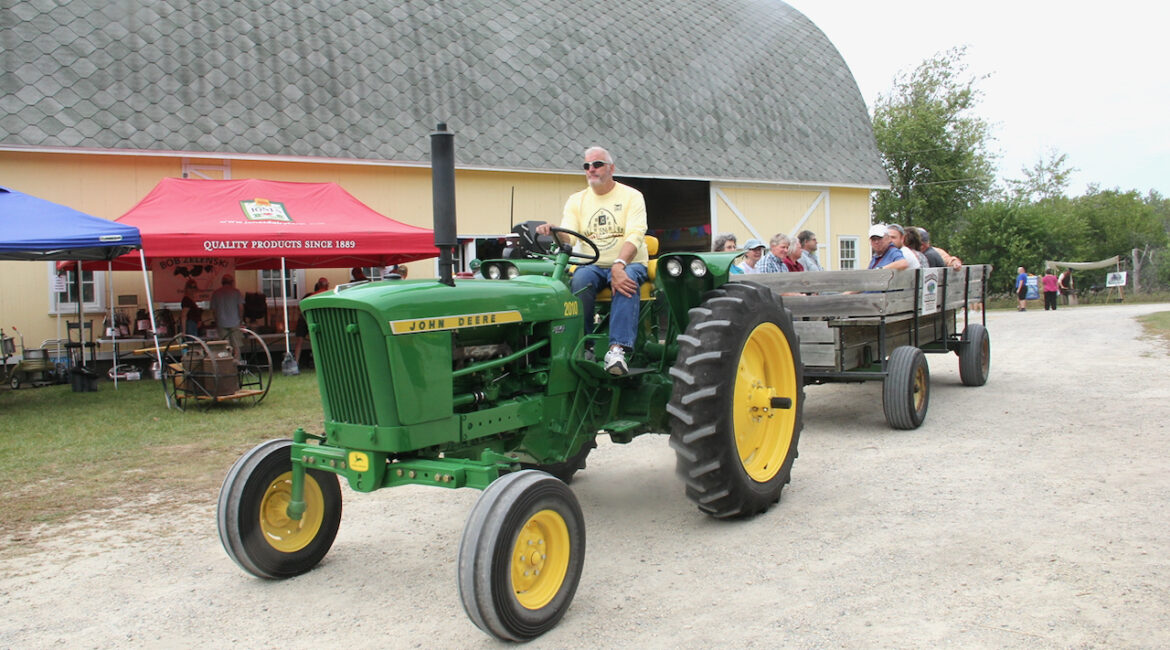By Chris Spangler
A landmark for State Highway 106 motorists, the yellow Jones Dairy Farm barn overlooking a bend in the Rock River celebrated its centennial Saturday.
The day featured haywagon farm tours; displays of agricultural art, farm toys, antique farm equipment and Jamesway memorabilia, and presentations on topics ranging from dairy barn architecture, manure management and hay mow feed systems to milking equipment, the dairy cow breeds and the Jefferson County Barn Quilt Trail.
Attendees enjoyed pulled pork sandwiches, salads, Hoard’s Dairyman cheese, cake and ice cream; music by Three Thin Dimes; and special appearances by the 75th Alice in Dairyland, Taylor Schaefer, of Franksville, and company mascot Pork Chop Jones.
Proceeds from the event, for which a limited number of tickets were sold, will go toward local agricultural scholarships.
A synopsis of the yellow barn’s history appears in a commemorative booklet given to guests. It tells how the barn, built in 1922 by W.D. James, is located on land originally settled by Milo and Sally Jones in the 1830s. They farmed until the early 20th century.
“Milo Jones, a government surveyor from Vermont, began dairy farming after receiving a 331-acre land grant from President John Tyler,” the booklet reports. “Milo believed in diversified farming, relying heavily on animal husbandry and commercial dairying. He built not only barns and chicken coops, but also a brickyard, tannery, and an inn, the Green Mountain House, which stood on South Main Street into the 20th century.”
As early as 1840, he was milking 10 cows and producing the first cheese in Jefferson County. In 1853, Milo became the charter president of the Jefferson County Agricultural Society. By the mid-1850s, his herd had grown to 25 head, and in 1870, he co-founded the Jefferson County Dairyman’s Association.
It was Milo and Sally’s son, Milo, who would go on to market “little pig sausages” to wealthy Chicago customers, paving the way for the well-known pork-production business. The company was formed in 1889.
W.D. James
W.D. James was born on a dairy farm in Wales, Wis., and trained as a blacksmith. The booklet notes that he was a prolific inventor of devices that improved the health and well-being of dairy cows and other livestock.
“In 1909, James set up a small workshop in Fort Atkinson with several local partners. His innovations, together with a passionate, yet matter-of-fact storytelling style, fueled rapid growth of The James Manufacturing Company,” according to the booklet. “Within a decade, it had grown into one of the largest manufacturers in the area and a world leader in state-of-the art fittings for dairy barns, poultry houses, and swine sheds.”
In 1919, James purchased about 80 acres of land from Milo Jones and established his own dairy farm. He installed innovative products to enable dairy farming “The James Way.”
“A curious customer wrote a letter to James, inquiring how a dairy farmer could build a fully equipped dairy barn for 50 head with a monthly investment of $75. W.D. James published a 32-page pamphlet describing just that. He stressed that while his own farm was not intended to be a model, it was a place where he ‘tried to do some things which (he) believed worthwhile,’ the booklet notes.
The yellow barn
Measuring 36-by-122 feet, James’ two-story Gothic-roof barn cost $14,000. It featured the newest James Way ventilation, support columns, stanchions, stall fittings, drinking cups, mangers and litter removal systems. It contained two interior silos and a single exterior silo.
“The Gothic-roof barn, when properly designed and properly constructed, is without doubt not only a most pleasing type of dairy barn, but also a most satisfactory type,” according to a Jamesway construction pamphlet. “The Gothic roof is rapidly winning the favorable attention of these dairymen who wish to combine practicability with beauty of design.”
James’ father, D.D. James, and three other men worked on the farm, which provided fresh Guernsey milk and eggs to homes in Fort Atkinson under James’ proprietary brand “KLEEN MILK.”
“Anecdotal evidence suggests the barn was painted its distinctive yellow color in deference to the Guernsey livestock and the pale yellow color of their milk,” according to the centennial booklet.
Not long after W.D. James’ death in 1948, the farm was sold back to the Jones family, who continued to operate a dairy farm and swine breeding operation. Some of the land to the east was used to expand production space for the sausage and smoked meats business.
“The herd of Guernsey cows was converted to registered Holsteins in 1974, due to market pressure which favored milk with a lower butterfat content than Guernsey milk,” the booklet states. “Additions to the 1922 structure were made to accommodate a larger herd, which grew to 140 head by 1982 and produced a rolling average of 18,000 pounds of milk and 711 pounds of butterfat.”
In 1983, Jones Dairy Farm hosted the largest June Dairy Month breakfast in Wisconsin, attracting 3,225 attendees.
Milking operations ceased in 1985, and the herd and dairying equipment were sold.
In 2019, Tawney Hadler of Fort Atkinson presented a custom-designed wooden barn “quilt” to Jones Dairy Farm, which hangs on the yellow barn and is visible from Riverside Drive.
“Today, the Jones Dairy Farm company remains focused on making all-natural sausage, dry-aged bacon, naturally smoked Canadian bacon and hams and authentic braunschweiger and continues its stewardship of the land,” the booklet reports. “The family is committed to preserving an important piece of local and dairy history represented by the W.D. James Barn.”
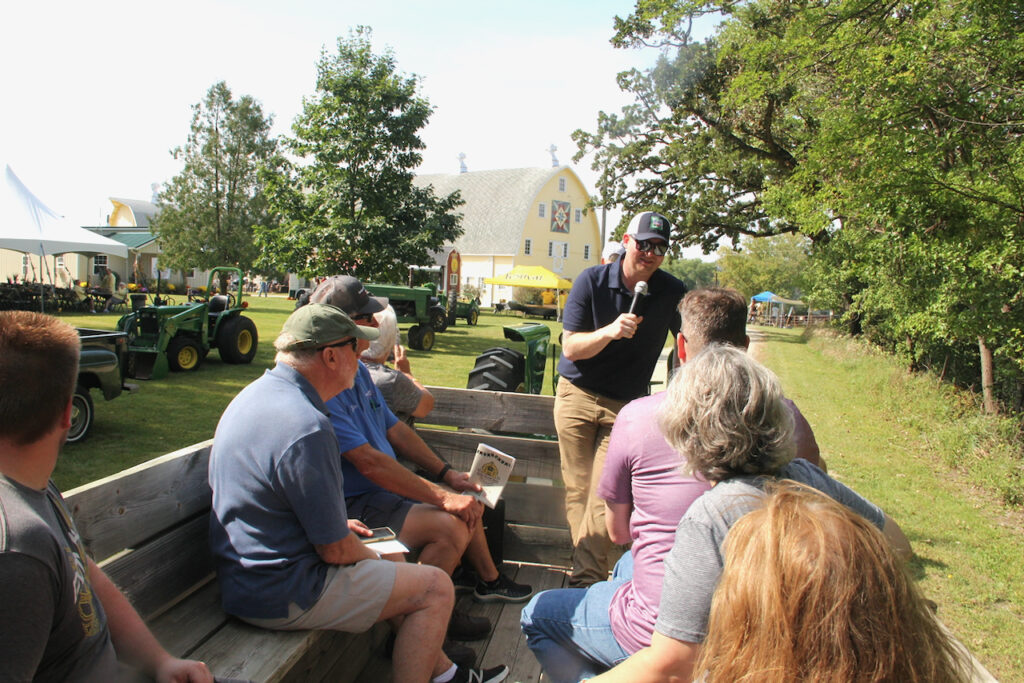
A hay wagon transports visitors to the 100-year-old Jones Dairy Farm barn. Will Jones, second-shift production supervisor, standing, serves as tour guide.
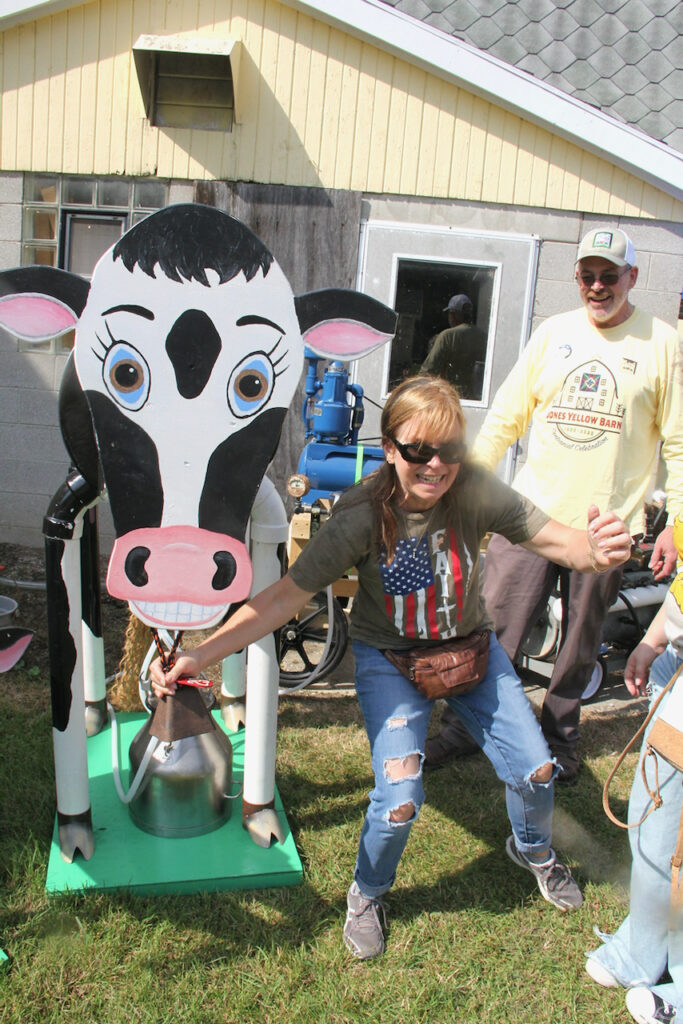
Valerie Herr of Janesville rings the bell after successfully “milking” a “cow.”
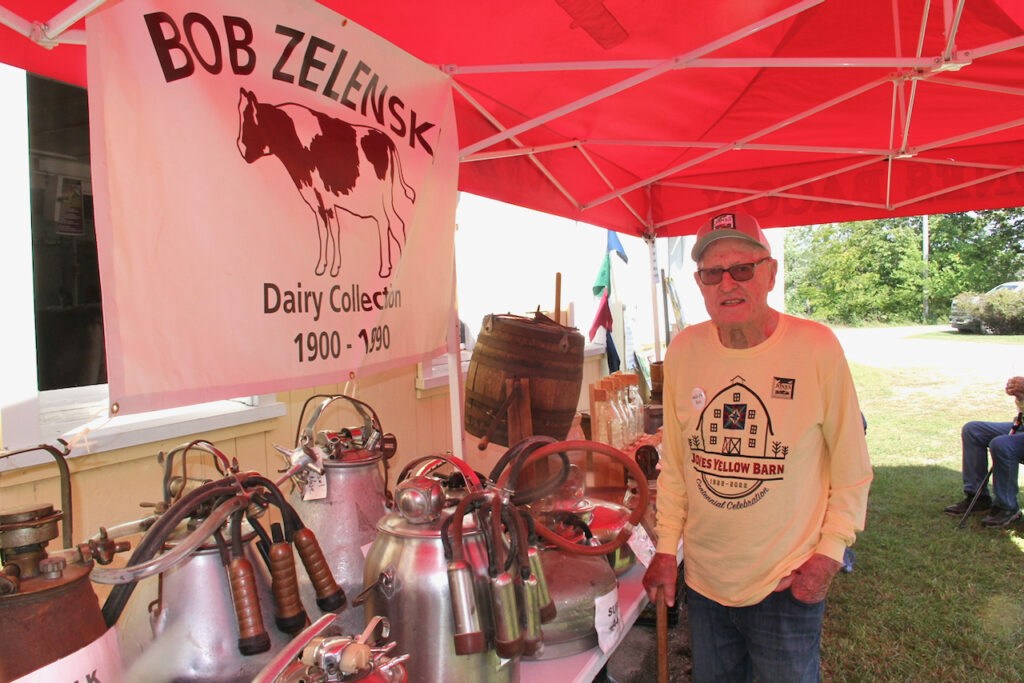
Bob Zelenski of East Troy exhibits his collection of dairy equipment from 1900-1990.
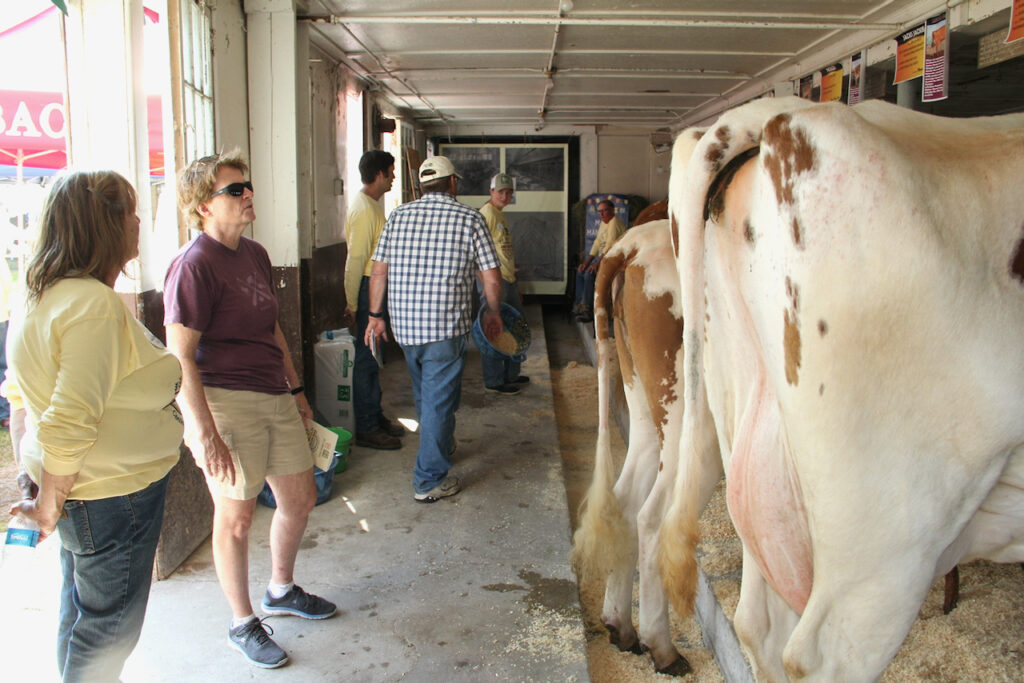
Fort Atkinson resident Sue Hartwick, second from left, while visiting the barn, checks out the various breeds of cows.
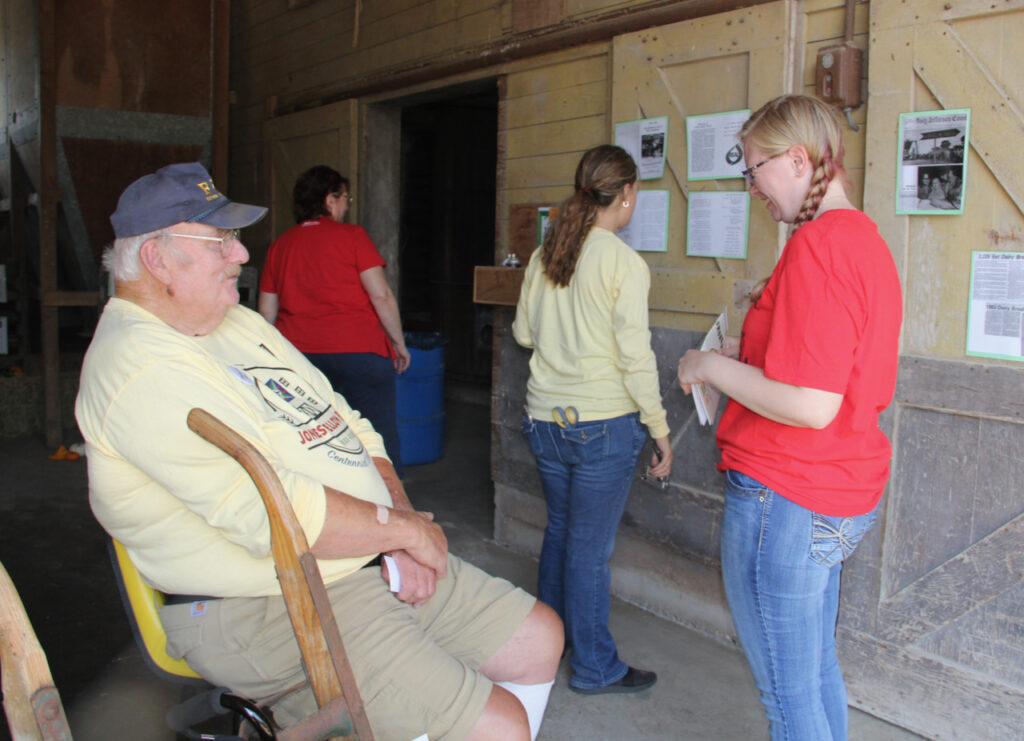
Residing on Holwis Farm west of Fort Atkinson, Tom Beane, seated, chats with Cierra Ehrke-Essock, Fort Atkinson. Beane was a presenter Saturday sharing information about dairy antiques.
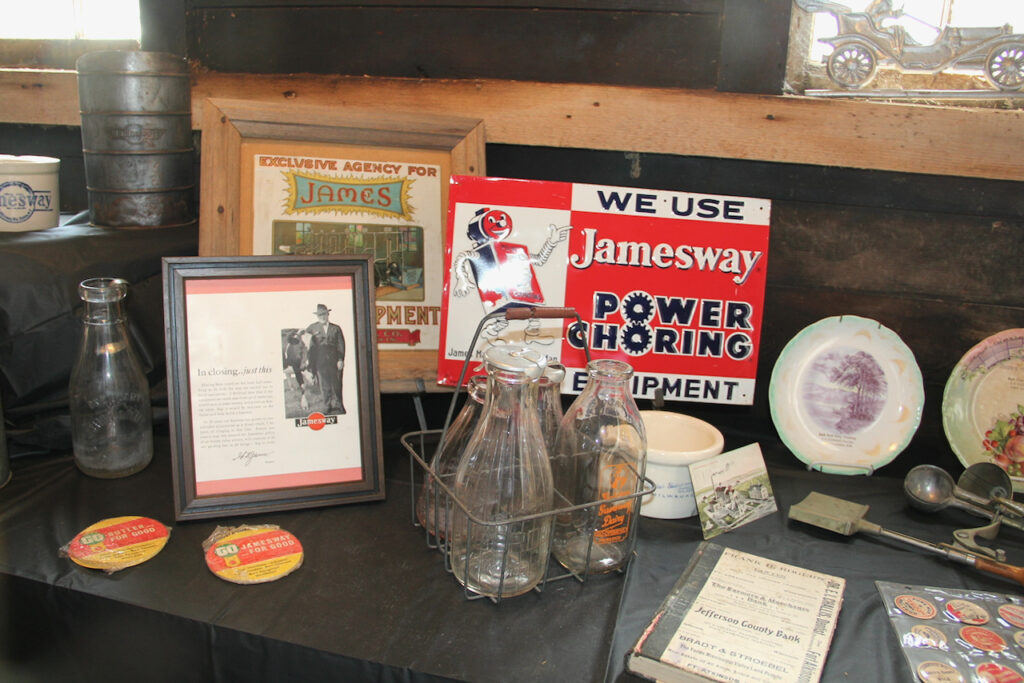
Jamesway products are on display in the 100-year-old yellow barn.
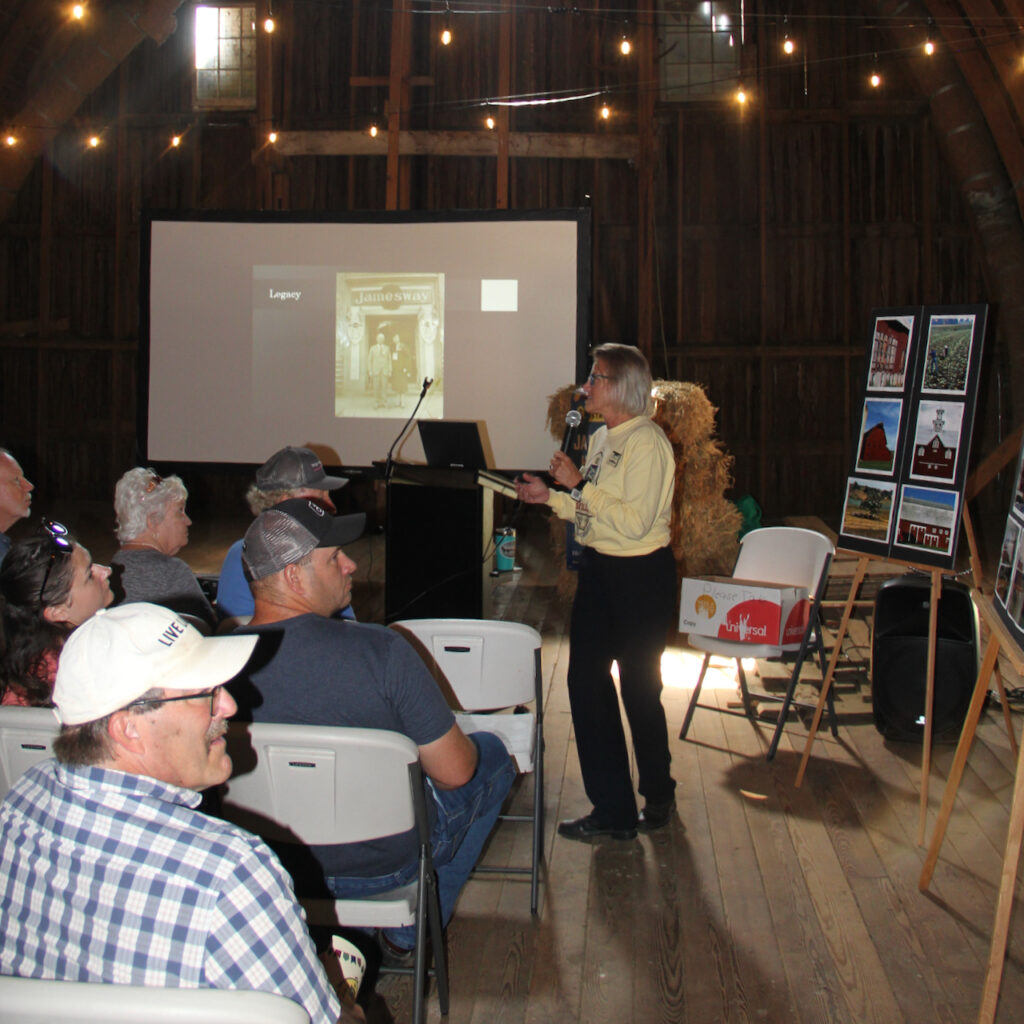
Rachel Nelan of Fort Atkinson, an architect and bio-ag specialist with Flad Architects, at right, talks about the design and engineering of dairy barns to promote animal health and efficient operation.
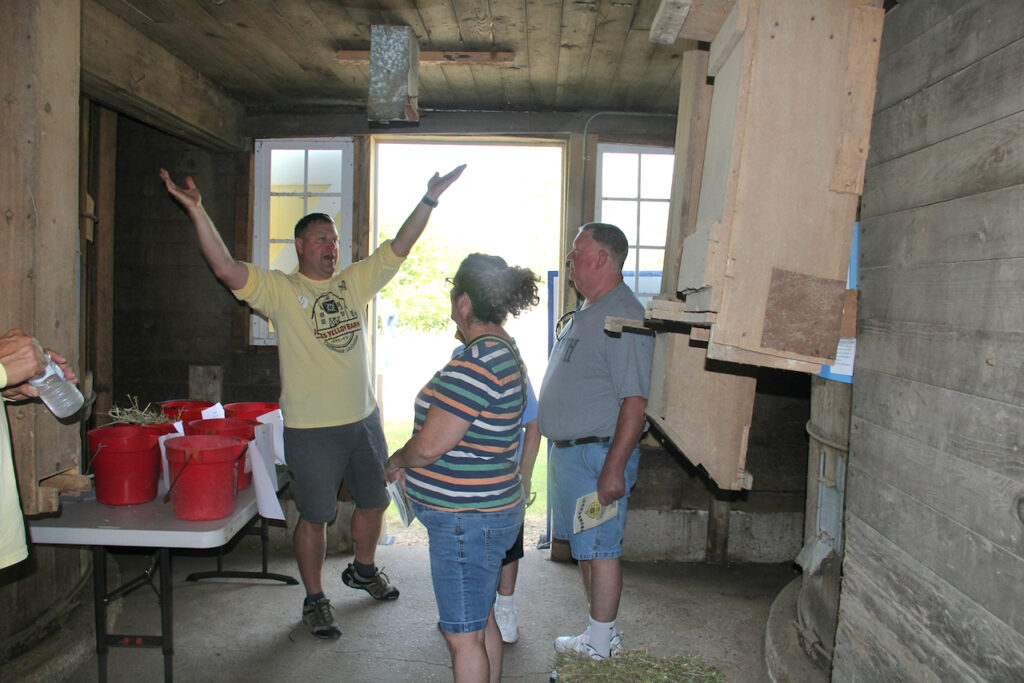
In the centennial barn’s grain-storage room, Paul Hadler, at left, shares with event-goers information about contents mixed into feed products for cows, and changes in mixtures made over the years.
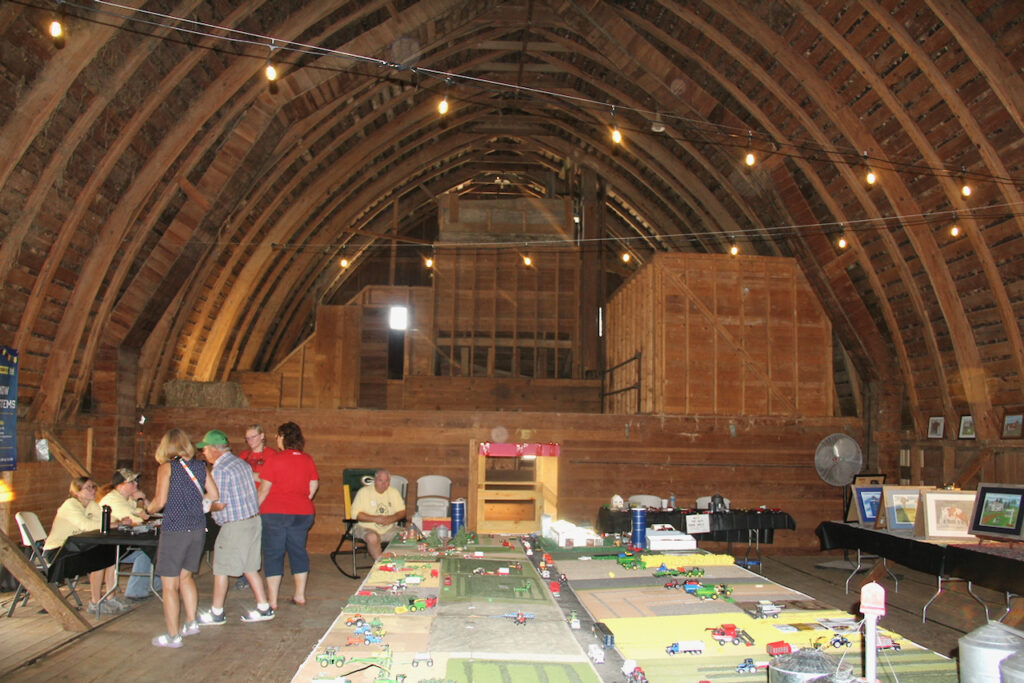
Farm toys are on display in the “hay mow” of the yellow barn. The displays were presented Saturday courtesy of John Klettke and Cal Anderson.
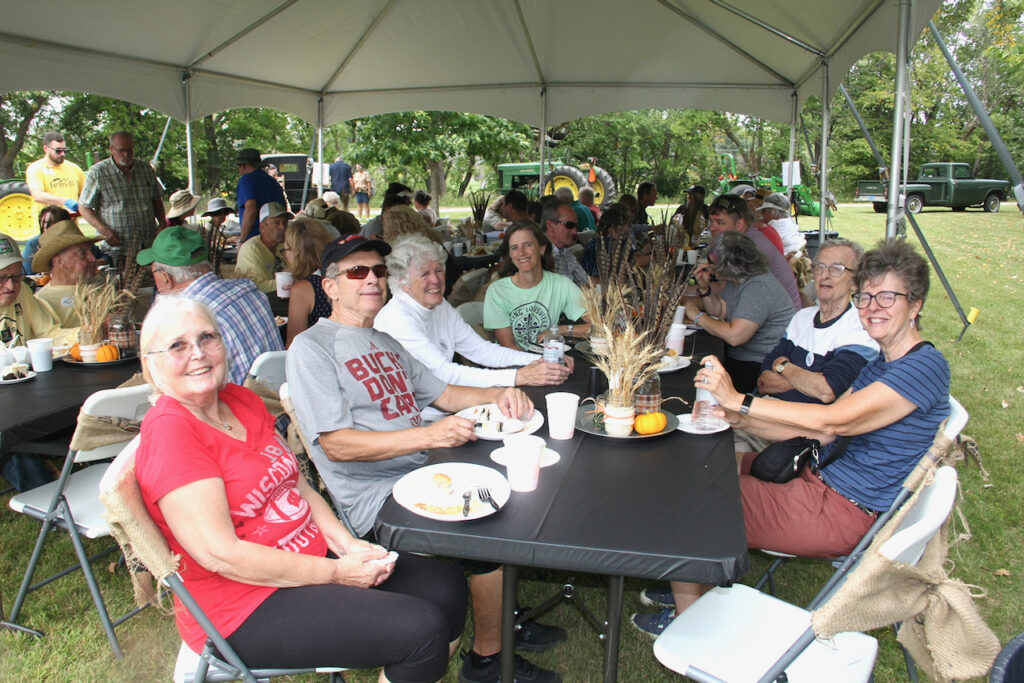
Sue Jones, who, while sharing the same last name, is not related to the Jones Dairy Farm family, and her husband, Jeff Tagliapictra, Madison, from left; Joan Jones, Fort Atkinson; Jenny Jones, Madison; Milo “Mike” Jones, Fort Atkinson, and Margaret Jones, Chicago and Fort Atkinson, enjoy lunch Saturday during the barn celebration.
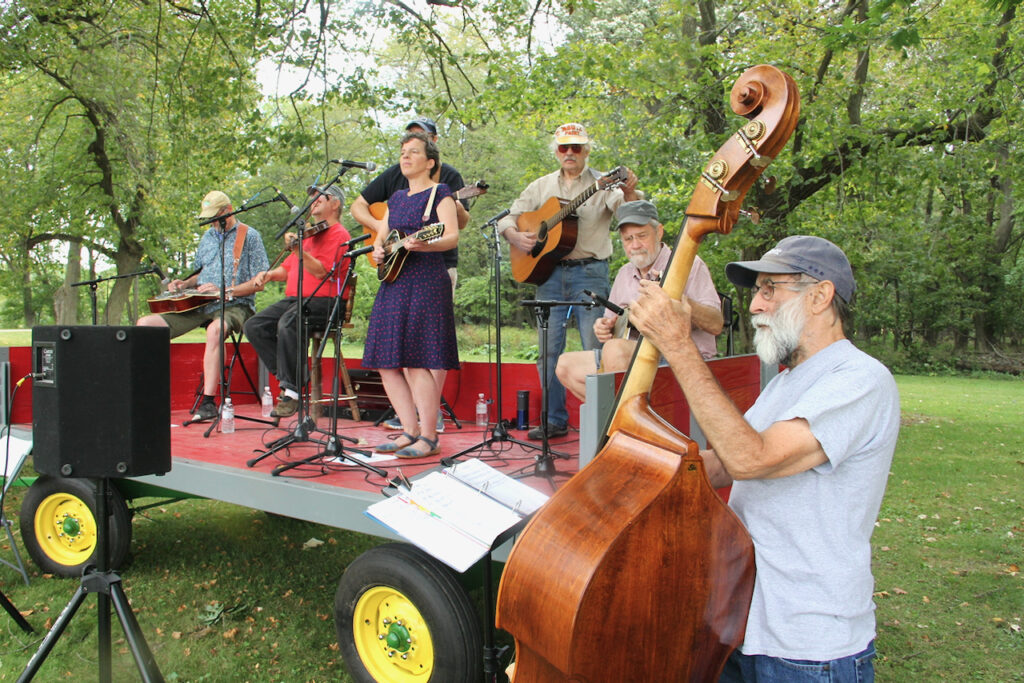
Local bluegrass group, “Three Thin Dimes,” performs during lunch as part of the yellow barn celebration held Saturday.
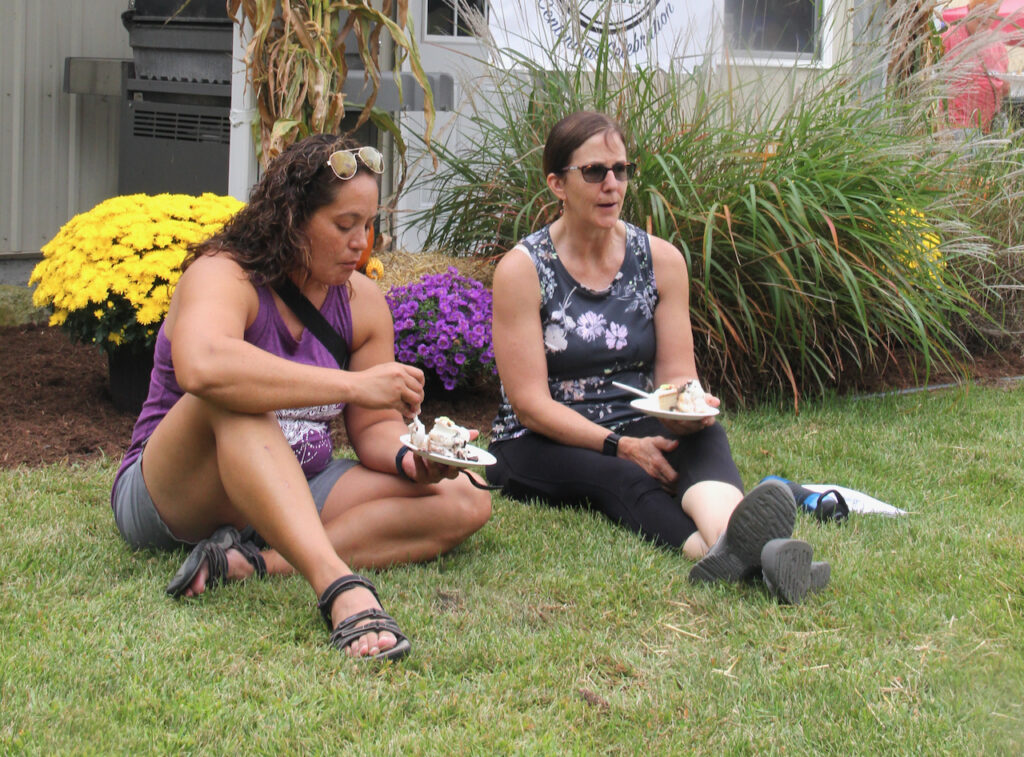
Rose Mansavage, at left, and Pam Peterson, both of Fort Atkinson, enjoy ice cream.

Tractor driver Bill Stroupe delivers guests to the yellow barn.

Mascot “Pork Chop Jones” and Jill Brunk mingle with guests. Brunk is a member of the FFA Alumni and served Saturday as a volunteer at the 4-Cs FFA ice cream booth.
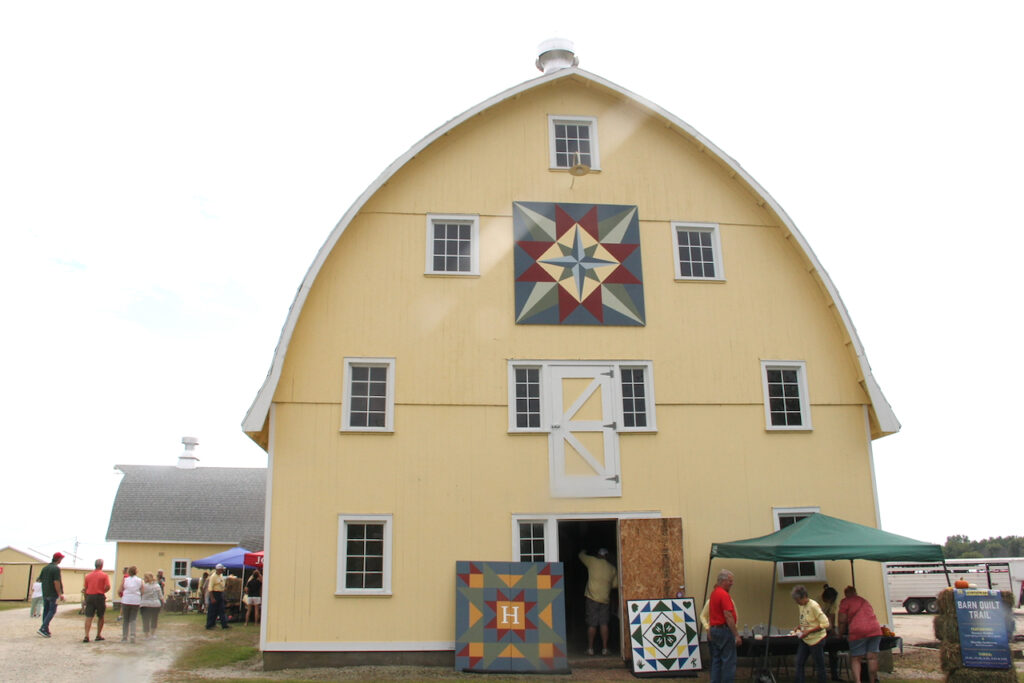
The Jones Dairy Farm yellow barn stands tall as event-goers tour and visit displays within and around the 1922-built structure. The barn was built by W.D. James.
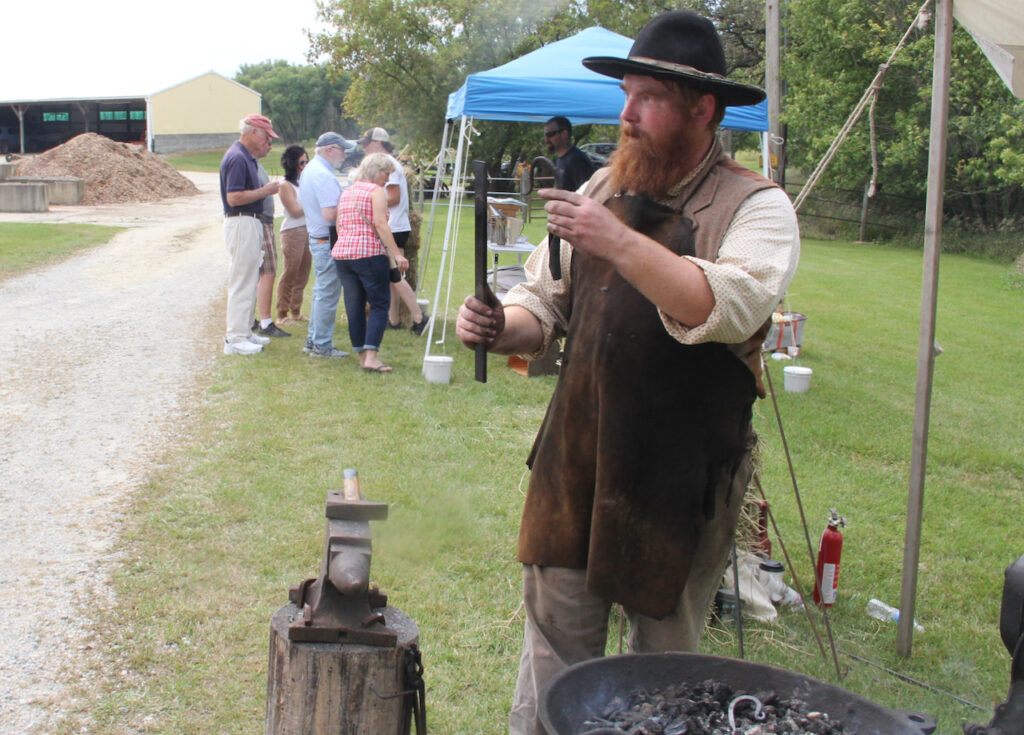
Dan Hess of Old World Wisconsin demonstrates blacksmithing at the barn centennial celebration. He is the Living History Program coordinator at the Eagle outdoor museum.
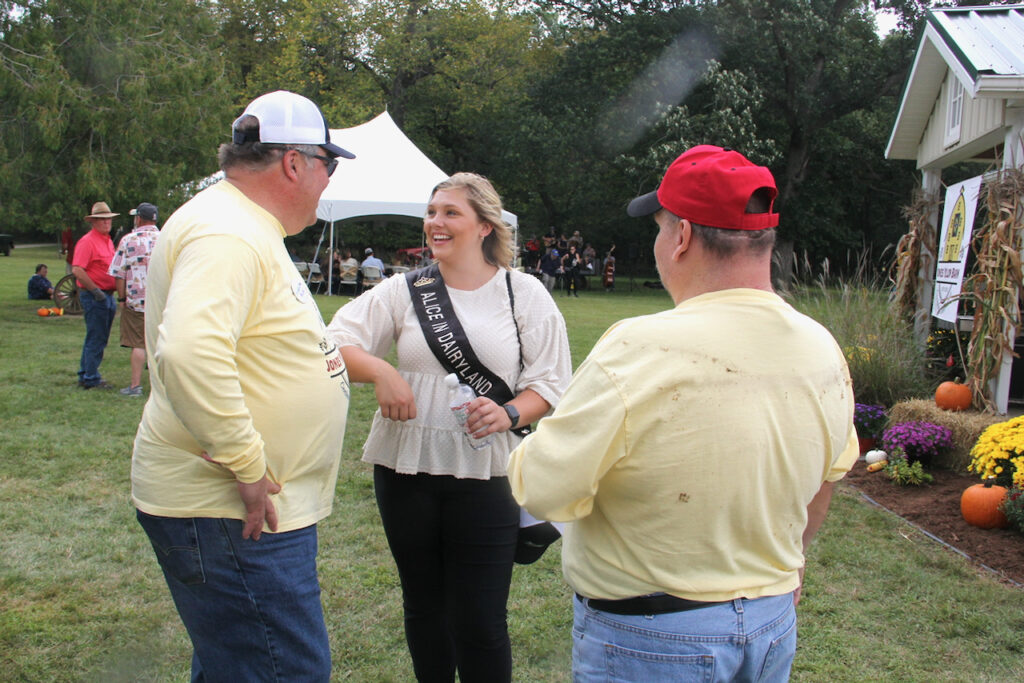
The 75th Alice in Dairyland, Taylor Schaefer, Franksville, visits with celebration volunteers.
Chris Spangler photos.
This post has already been read 5952 times!
